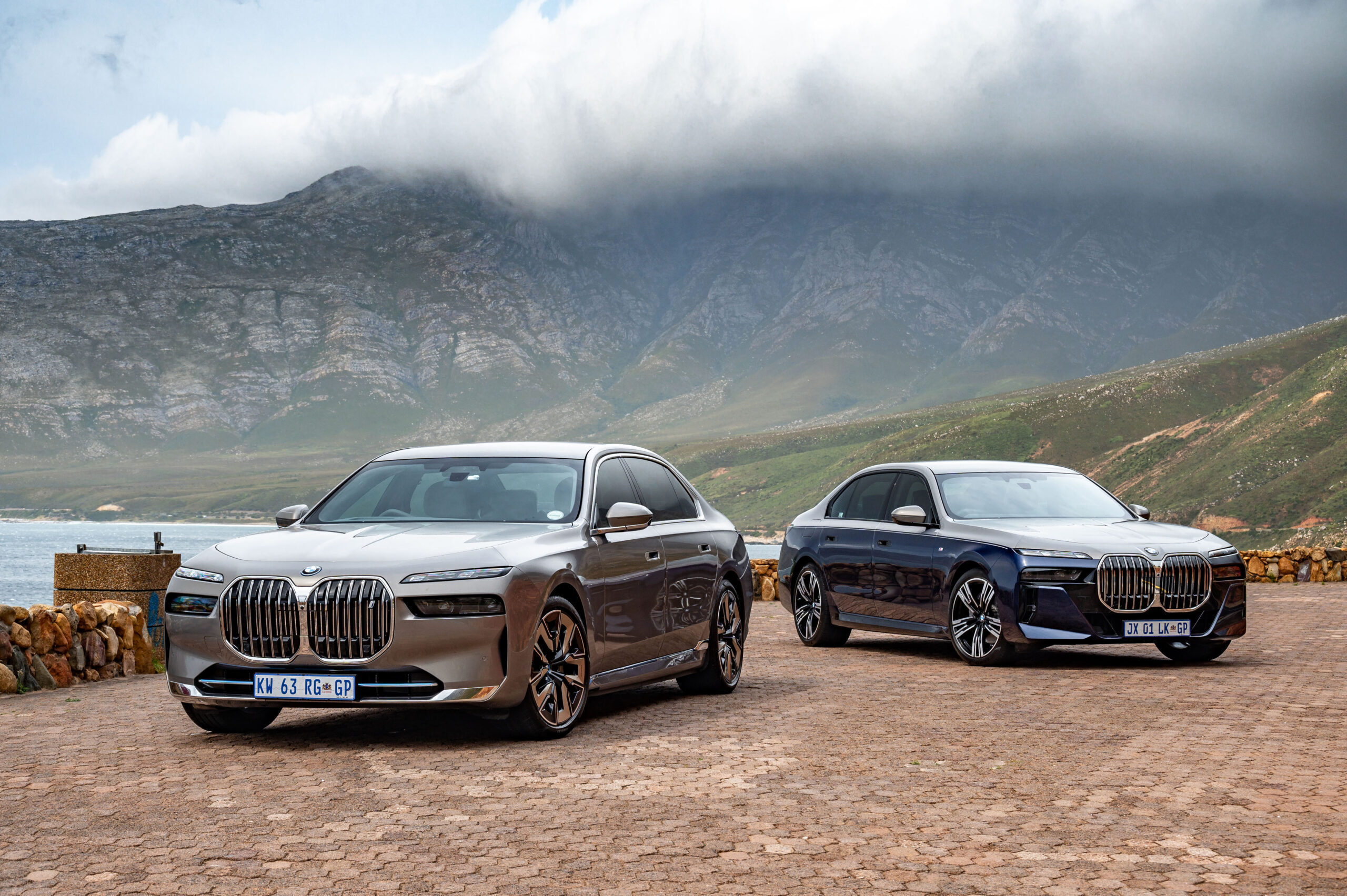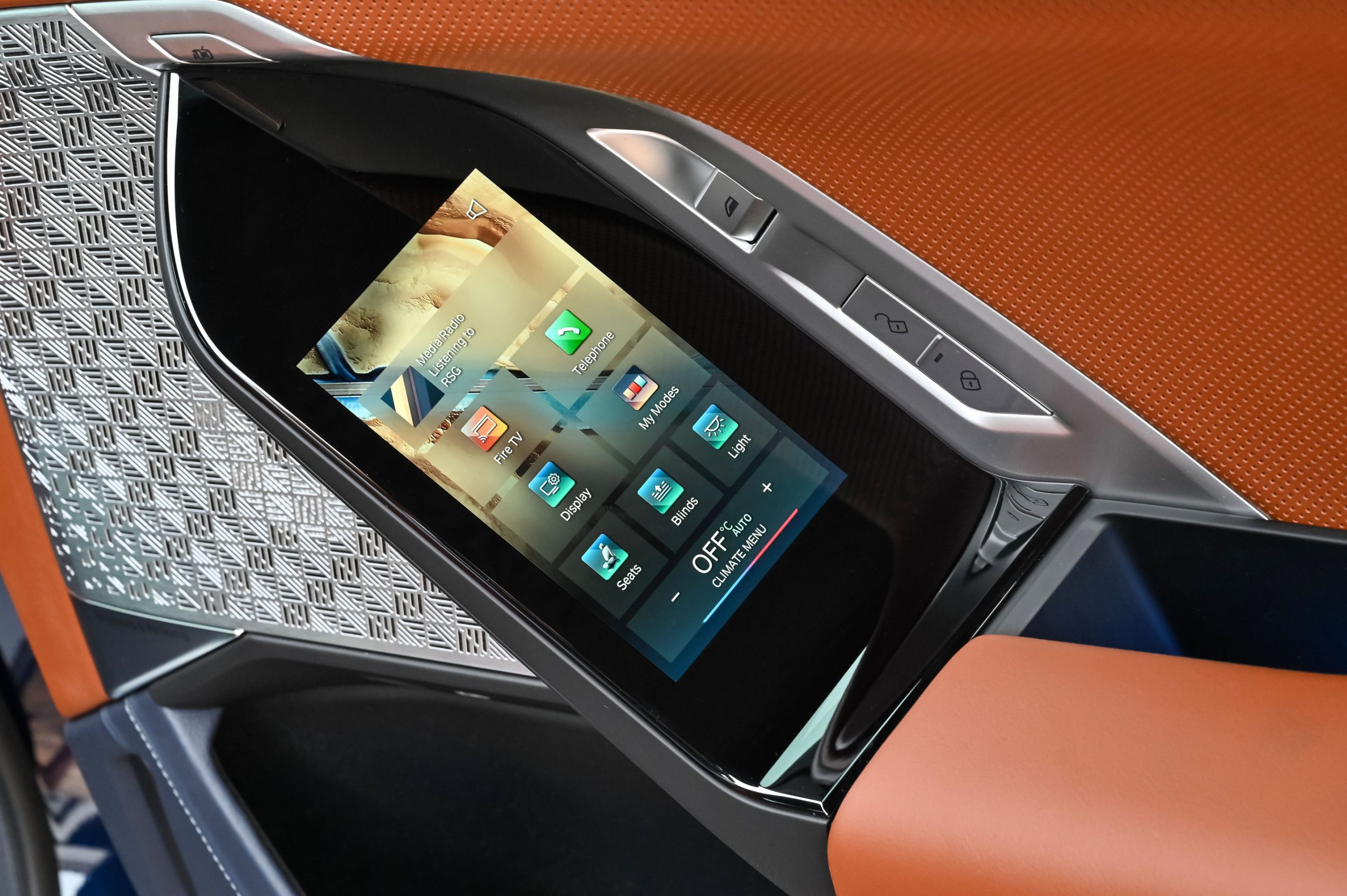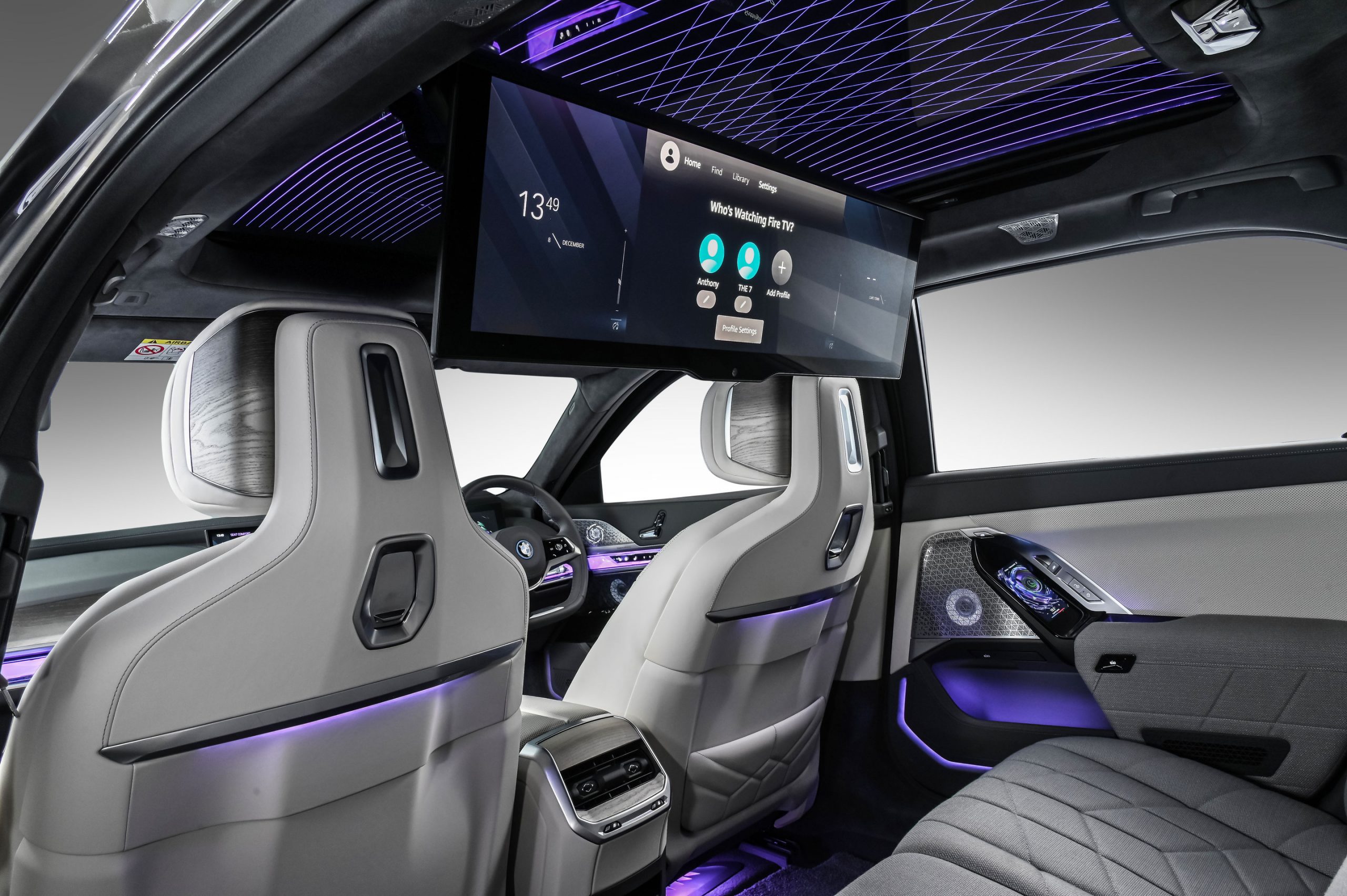Like a bottle of Napoleon, a BMW 7 Series should never be conspicuous but always present. The 7 Series is the centre of all R&D and innovation for the rest of the Bavarian manufacturers’ lines including its EVs. While the new 7s are all of that, the most dramatic upgrades range from unpretentious to sublimely ostentatious.

Led by a vastly divergent and aggressive new monolithic front end, the car tapers down bullish RR Phantom lines to finish with a perfectly proportioned rear that at worst is a tiny nod to the frumpy sandwich of yore.
Like the rest of the car, even the exterior is bristling with innovation from backlit Swarovski headlights to vastly improved sensors and cameras with object recognition for augmented reality and assisted driving. Based on recent patent submissions, the thin strips that house the running lights and possibly functional indicators may be merged with the controversially enormous kidney grilles to form a single front element. (More info here).
Front or back door?
As before, the 7 Series is designed to be both a driver and chauffeured experience with a slight bias towards passengers that goes beyond the full-seat recliner. It’s at this point where the new 7’s move into Fun Land may divide its audience.

As the automatic doors swing open and you enter the back seat, based on a preset mode the car can either look like anything from an ubër nightclub in Berlin or the world’s most opulent 1st class booth. There are mini smartphone-like controls in each door that allow a host of controls for entertainment such as the R60,000 optional 8K dropdown Fire OS-powered touch screen.
 The list of options and settings is mind-numbing but it’s the preset modes that make you question a shift in the car’s potential audience. The options are Sport, Efficient, Expressive, Relax, Theater, and Digital Art. The strange blend of cosmetic and functional may take some getting used to. Cosmetically they change the backgrounds on the dashboard and passenger control screens as well as colourfully changing up the lighting on the controls, cabin, LED patterns on the panoramic roof, and the Swarovski listello.
The list of options and settings is mind-numbing but it’s the preset modes that make you question a shift in the car’s potential audience. The options are Sport, Efficient, Expressive, Relax, Theater, and Digital Art. The strange blend of cosmetic and functional may take some getting used to. Cosmetically they change the backgrounds on the dashboard and passenger control screens as well as colourfully changing up the lighting on the controls, cabin, LED patterns on the panoramic roof, and the Swarovski listello.

Functionally they affect driving dynamics, seat shape and massage settings, audio profiles, the sunroof, the blinds, and a significant combination of other things you will struggle to recall. It’s an impressive, novel, and entertaining feature but the effort required to familiarize and customize the setups could be overwhelming. Another niggle for the driver is that some of the modes, as well as dropping the screen, close the rear blind leaving no option but use the rear camera and potentially set a new mode all over the dashboard.
Technology with a dash of car
In-cabin options are the tip of the iceberg. BMW can rightfully claim one of the most intuitive in-car interfaces, letting the majority of innovations work for you behind the scenes. The reality is that even the distilled list of visible options is mindboggling – in a good way. Then come the engines.
 The BMW i7’s electric motor and high-capacity battery not only negates the 500kgs of added weight, but the constant availability of torque makes one of the biggest sedans on the road feel spry and punchy. Coupled with vastly improved steering, suspension and drive control it’s staggering how 2.5 tons can feel like a racing car even when throwing it around corners. Put all the driving assists back on and the car is as close to an autonomous lounge as regional regulations will allow.
The BMW i7’s electric motor and high-capacity battery not only negates the 500kgs of added weight, but the constant availability of torque makes one of the biggest sedans on the road feel spry and punchy. Coupled with vastly improved steering, suspension and drive control it’s staggering how 2.5 tons can feel like a racing car even when throwing it around corners. Put all the driving assists back on and the car is as close to an autonomous lounge as regional regulations will allow.
BMW’s 740i version is powered by a 3.0-litre turbocharged inline-six powerplant bonded to an eight-speed automatic gearbox. Even though it’s lighter than the i7, it’s heavier in the front and with the lack of instant torque the 740i is slightly prone to understeer when pushed hard. When drag racing the pair, the i7’s nose lifts very satisfyingly as it leaves the 740i behind.
BMW 7-Series and i7 verdict
The BMW 740i hovers at around R2.2 million and the i7 roughly R900 000 on top of that. The entire experience of both cars, especially as a passenger, is not that disparate so the choice will come down to whether or not you really want an EV and have the infrastructure to charge it.
The BMW i7 is likely the most advanced EV to date, superseding even the iX. It boasts an exceptionally high-capacity battery pack which takes around 45 minutes to fully charge using a DC charger, hours on a level 2 charger and longer still via wall plug. With decent driving, regenerative braking and eco mode you will squeak 600km out of a charge.
The 740i hovers at around R2.2 million and the i7 roughly R900 000 on top of that. The entire experience of both cars, especially as a passenger, is not that disparate so the choice will come down to whether or not you really want an EV and have the infrastructure to charge it.
-
Design
-
Performance
-
Infotainment
-
Features
-
Price



